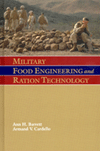
The image shows the piezoelectric quartz crystal at the heart of Electronic Sensor’s surface acoustic wave detector, as seen through its supporting yolk. The entire unit fits in the palm of a human hand. Source: Electronic Sensor Technology Inc.

Marlene Stewart, director-business development, Electronic Sensor Technology Inc., Newbury Park, CA. Source: Electronic Sensor Technology Inc.
Newbury Park, CA-based Electronic Sensor Technology Inc. (EST) first commercialized its high-speed detection system in 1995, combining a chemical vapor preconcentrator, a surface acoustic wave (SAW) detector, and gas chromatograph instrumentation. Volatile organic compounds are emitted by all living organisms, and EST’s electronic nose, called the zNose, concentrates those VOCs for analysis. Based on the chemical fingerprint of a particular bacterium, a chromatogram is generated, graphing chemicals on the Kovats Indices. EST’s system includes a sensor head and support chassis, which houses a helium gas tank and an uncoated piezoelectric quartz crystal, and a system controller housed in a laptop computer. The e-nose serves as the vapor analyzer, generating readings within half a minute, compared to hours for a conventional e-nose.
EST was co-founded by Edward J. Staples, a physicist who once worked at Rockwell International. Staples and an electrical/electronics engineer developed the technology for research scientists. More recently, efforts to widen applications to include food safety, homeland security and infection control have begun. Heading the commercialization drive is Marlene Stewart, director of business development. A specialist in development of biotechnologies that also lower operating costs, Stewart joined EST in 2008. She holds a doctorate of chiropractic and has guided commercialization of numerous emerging technologies over the last decade.
FE: How does EST’s system work?
Stewart: Chemical detection begins drawing a 10-second sample of gas from a vial’s headspace. Data analysis typically takes 20 to 30 seconds, and then the instrument self-cleans and re-sets for the next test. Total cycle time is less than a minute per test.
Test results are based on the Kovats Indices. The system provides an ultra-fast methodology for chemical analysis by concentrating and analyzing VOCs. It detects melamine in milk powder, salmonella on raw chicken and E. coli in less than a minute with no enrichment time. Each sample contains 5 cc of air, and instrument flow rate is 30 ccm. The instrument can auto-sample air on a production line or rely on food samples placed in glass vials with septum lids. Needles would then be inserted to draw the gas sample.
FE: What are the physical dimensions of the system?
Stewart: The entire system weighs about 15 lbs. It consists of a 5.7-lb. detection head with a sample pump, a tenax trap, a one-meter column and a surface acoustic wave solid-state detector. There’s also a battery pack, which also houses a helium tank. Helium serves as the carrier gas, constantly flowing through the system and carrying gas vapors in order of molecular weight to the sensor. There is a reference sensor and a detection sensor, where substances oscillate as they elude out of the column. The differences in the two readings are interpreted by MicroSense software.
A quartz crystal is embedded in the SAW detector. Hydrocarbons with a molecular weight and density between C4 and C22 are detected.
FE: Why is helium used as the carrier gas?
Stewart: Other gases could be used, but helium is clean, relatively cheap and does not interfere with test results. If a sensor is placed in a remote field location, a liquid gas might be used to decrease maintenance.
The system self cleans with heat after each test. Acetone can be used on the crystal periodically. If you’re conducting a test and something sticks, you just heat up the column and you’re good to go.
Speed and sensitivity are remarkable. When samples are sent to the lab, glass vials are used. If samples are tested in plastic, the system “smells” the plastic’s VOCs, and spikes are recorded on the chromatogram.
FE: How does the unit differ from other electronic noses?
Stewart: Overlapping responses and physical instability can limit performance by conventional electronic noses. This electronic nose, which we call zNose, is based on ultra-fast gas chromatography. It simulates an almost unlimited number of virtual chemical sensors and produces olfactory images based on aroma chemistry. It conducts analytical measurements in near real time and at sensitivities in the parts-per-billion and parts-per-trillion range. Indexing based on the Kovats Index of target compounds provides convenient identification. The instrument also has expandable and programmable detection capabilities, eliminating the need for multiple standards and reducing complexity.
FE: Is the technology already in use in food manufacturing?
Stewart: Many companies use it for quality assurance and detection of illegal additives, insecticides and so on. One client deployed zNose to monitor raw materials prior to export. Tainted shipments were identified and refused before leaving port, resulting in significant financial savings.
For food uses, my main focus has been on pathogen detection. I have been working closely with Raul Cano, professor emeritus in biological sciences at Cal Poly State University and now director of the Environmental Biotechnology Institute, where we are conducting tests involving pathogenic bacteria, including Salmonella. We plan to have the technology in place at a food processing plant in the next few months.
FE: Describe the lab tests involving Salmonella.
Stewart: We placed raw chicken in glass vials, inoculated it with Salmonella muenchen, took a 10-second head space sample from each vial, and the instrument identified the chemical profile in all the samples in less than a minute per test. Besides a conventional chromatogram, the software also generates what we call a VapoPrint, a chromatogram placed on a 360
